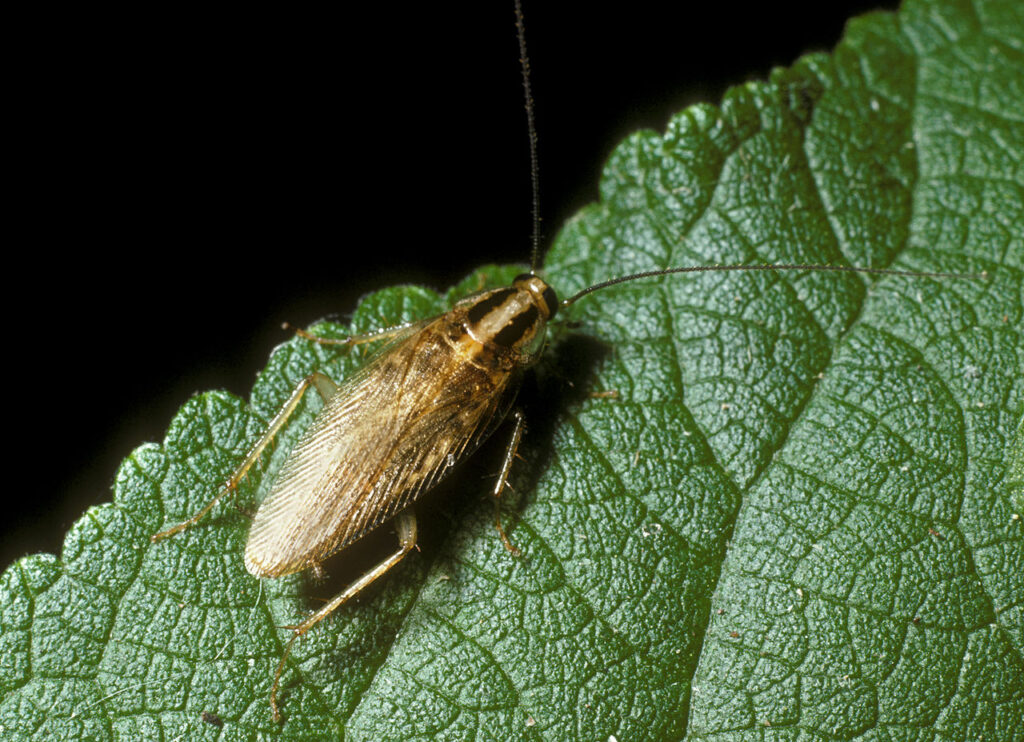
Identification and Facts
The German cockroach, or Blattella germanica, is a common pest in homes and businesses worldwide. This small insect measures about 1/2 inch long and has a brown body with two dark streaks on its thorax. Unlike some cockroaches, the German cockroach cannot fly. Instead, it relies on its speed to scurry into hiding spots when disturbed.
German Cockroach Appearance
Often called the “steam fly,” the German cockroach prefers warm, humid environments. Males are light brown and have a boat-shaped body, while females are darker with a broad, rounded back. A unique behavior of female German cockroaches is carrying their egg capsules, or ootheca, until the eggs are ready to hatch. This trait is rare among other cockroach species.
Life Cycle and Reproduction
German cockroaches reproduce quickly. A single female can produce 4-8 egg capsules, each containing 30-40 eggs. The eggs hatch in 3-4 weeks, and nymphs can develop into adults in just 40-125 days. This rapid reproduction allows for up to four generations each year. Nymphs and pregnant females are particularly difficult to control, highlighting the need for effective pest management.
Habitats and Infestation
German cockroaches thrive where food is plentiful. You often find them in food warehouses, restaurants, and homes, hiding in dark, moist areas like behind stoves, under sinks, and inside cabinets. Their ability to squeeze into cracks and crevices makes them hard to eliminate. When infestations occur, thorough inspections are crucial to assess their extent. Effective control often combines sanitation, residual insecticides, and insect growth regulators.
German Cockroach Control Methods
To manage German cockroach infestations, consider these strategies:
- Gel Baits: Effective in sensitive areas like hospitals, gel baits minimize contamination risks.
- Flushing Agents: Use flashlights and aerosol flushing agents to locate hidden infestations.
- Monitoring Devices: Glue boards and pheromone traps help track cockroach populations and assess treatment success.
Ongoing vigilance is essential, as German cockroaches can easily return. Implementing comprehensive Integrated Urban Pest Management (I.U.P.M.) practices that focus on sanitation and monitoring can significantly reduce their numbers in homes and businesses.
By understanding the biology and behavior of the German cockroach, we can implement effective control measures to keep our environments pest-free. For more safe pest control methods, visit the Illinois Department of Public Health.
Don’t let German cockroaches invade your home! If you suspect an infestation, contact us today for professional pest control solutions tailored to your needs.
